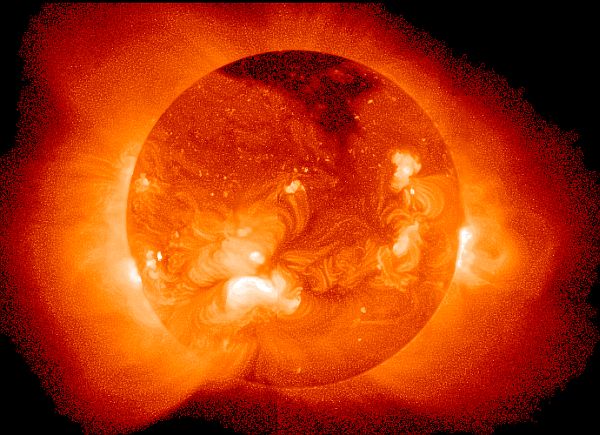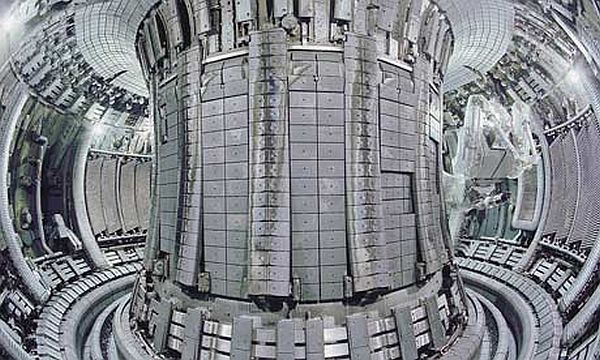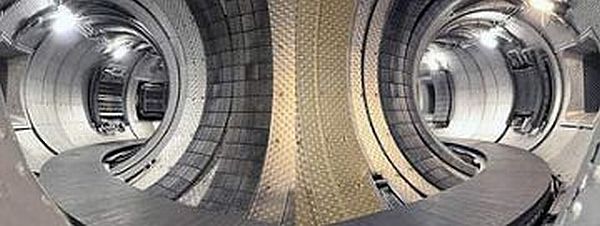 Fusion power refers to the energy produced during nuclear fusion reactions that takes place when two light atomic nuclei fuse together to form a heavier nucleus. Such reactions takes place in the celestial objects like the sun and other stars. Nuclear scientists have produced this form of energy by heating together nuclei of isotopes of hydrogen, namely, deuterium and tritium – under very high temperature (upto 100 million degree celsius). And, with little success so far, they have been trying to tap the nuclear energy, for meeting our energy demands.
Fusion power refers to the energy produced during nuclear fusion reactions that takes place when two light atomic nuclei fuse together to form a heavier nucleus. Such reactions takes place in the celestial objects like the sun and other stars. Nuclear scientists have produced this form of energy by heating together nuclei of isotopes of hydrogen, namely, deuterium and tritium – under very high temperature (upto 100 million degree celsius). And, with little success so far, they have been trying to tap the nuclear energy, for meeting our energy demands.
Trends
1. The Joint European Torus (JET)

JET is the main reactor for research for the European Fusion Program for demonstrating the feasibility of fusion as an energy source. Based in Culham, Great Britain, the JET was approved in 1974 and started operating from 1983. The reactor is equipped to remotely handle the radioactivity which is produced by the combustion of deuterium and tritium. It has successfully generated 16MW of fusion power. However, it is still considered to be too small to produce more energy which is required for starting the reaction (25MW).
2. ITER: Reactor to turn sea water into abundant cheap, clean nuclear power with no radioactive waste!

Based in Cadarache, France, the International Thermo-Nuclear Experimental Reactor (ITER) is the largest international fusion experiment of its kind with seven members – European Union, Japan, the Russian Federation, China, Korea, India, and the USA. It will be twice the size of JET and designed to use nuclear fusion to produce 500MW of power with 50MW of input power. This experimental reactor will use a ring-shaped magnetic chamber, or tokamak, for trapping the high temperature required for a fusion reaction to begin. The reactor facility is under construction and it is expected to be ready by 2019.
3. MIT tests unique approach to fusion power

The Alcator C-Mod reactor at MIT is a university based tokamak type fusion reactor. Over 30 years of experiments at this reactor have revealed a new process called ‘fusion burn’. It is expected to solve the basic operational problem of fusion reactors. According to MIT News, the fusion reactions and the power in this process are sustained by self-heating and without any constant supply of outside heat. The MIT researchers are expecting to successfully test the ‘fusion burn’ process at the ITER.
The Benefits
Fusion power is produced by the reaction of nuclei deuterium and tritium. These two isotopes of hydrogen are available in inexhaustible proportions. The by product of a fusion reaction is helium which does not harm the environment. Also, unlike the nuclear fission reaction, the fusion reaction does not produce any harmful nuclear waste. Thus, considering the threats of an impending energy crisis, global warming, and nuclear waste, fusion power is our best bet under the circumstances.
The Lowdown
It requires a very high temperature for starting the fusion reaction. And, under vacuum like conditions in the reactor, it is very difficult to contain that heat while allowing the contaminating particles that can interfere with reaction to escape and be removed from the chamber. In the absence of any major breakthrough, many countries are stepping out of fusion research.
The Impact
Fusion power has the potential to become almost inexhaustible source of energy for the entire world, though there are extreme engineering and scientific challenges associated with its production. The research on fusion power has brought international co-operation for development to the fore by bringing different countries together for sharing there scientific expertise and research acumen. This is quiet in contrast to the initial days when fusion power was linked to the atomic weapon development and all the information related to it were kept a secret by the USA and the USSR.




